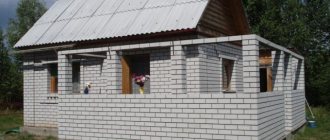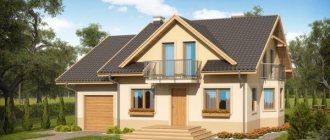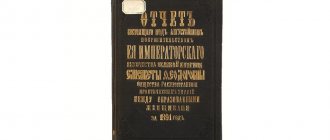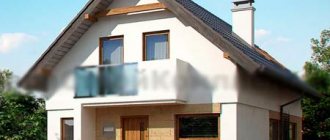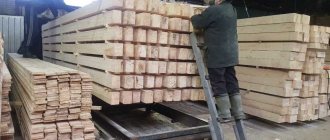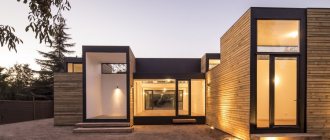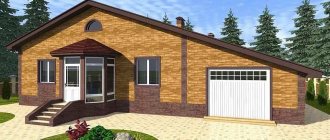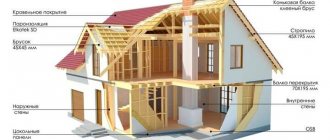Up to 400 “squares” is possible. Smolensk residents were explained which stores they would be allowed into without a QR code
We are publishing a commentary from the head of the regional department of industry and trade, Igor Sokolov.
The department emphasizes that after the latest changes were made to the governor’s decree “On the introduction of a high alert regime,” Smolensk residents had numerous questions. They mainly concern how and where people who are unvaccinated and have not recovered from COVID-19 can now buy food.
Let us remind you that according to paragraph 4 of the decree, from October 21, entrance control must be organized at the entrances to grocery stores, supermarkets, department stores, hypermarkets, shopping centers and complexes. Only those who have a vaccination certificate, a certificate of previous illness (provided that no more than 6 months have passed since the date of recovery), a negative PCR test (valid for 3 days) or a medical exemption from COVID-19 vaccination can be allowed inside. However, the requirements do not apply to minors from Smolensk.
“When citizens visit retail outlets with a trading floor area of up to 400 m2, as well as small retail stores of a similar area, ensuring entry control of the presence of one of the above documents for citizens, as well as the mandatory presentation of them by citizens, is not required,” notes Igor Sokolov.
Help "RP"
Moreover, according to “GOST R 51303-2013. National standard of the Russian Federation. Trade. Terms and definitions" (approved by Order of Rosstandart dated August 28, 2013 No. 582-st):
GASTRONOME: A store with a sales area of 400 m2 or more, in which they sell food products of a universal range with a predominance of gastronomic products (cheeses, sausages, fruits, wine and vodka products and soft drinks, etc.) mainly using individual customer service across the counter.
SUPERMARKET: A store with a sales floor area from 400 m2 to 2500 m2, which sells food and non-food products of everyday consumption mainly using the self-service method.
DEPARTMENT STORE: A store with a total sales area of 3,500 m2 in an urban area and from 650 m2 in a rural area, in which a universal range of non-food products are sold.
HYPERMARKET: A store with a sales floor area of 5,000 m2 or more, in which a universal range of food and non-food products are sold primarily using the self-service method. Hypermarkets, as a rule, organize their own culinary, baking and confectionery production and corresponding departments for the sale of manufactured products, as well as provide additional trade and catering services.
SHOPPING CENTER: A set of retail enterprises and/or service enterprises that sell a universal or specialized range of goods and a universal range of services, located on a certain territory in buildings or structures, planned, constructed and managed as a single whole and providing parking within the boundaries of its territory for cars
TRADE COMPLEX: A set of trade enterprises that sell goods and provide services, located in a certain territory and centralizing the functions of economic services for trade activities. Housekeeping functions include engineering support (electric lighting, heat and water supply, sewerage, communications), repairs of buildings, structures and equipment, garbage collection, security of retail facilities, catering for employees, etc.
Photo: Anatoly Solovyanenko
Site measurement unit
In Russia, according to the Resolution on Units of Measurements, it is allowed to measure area in hectares and ares. Ar, as was written above, is popularly called “weaving”.
Site measurement units common in Russia:
- hectares;
- macaws;
- square kilometers;
- square meters.
Decree of the Government of the Russian Federation of October 31, 2009 N 879 “On approval of the Regulations on units of quantities allowed for use in the Russian Federation”
What is weaving
Traditionally in Russia, land plots were measured in tithes. After the revolution of 1917, a new unit of measurement was introduced - the ar. Ar is a square of 10 by 10 meters and is equal to 100 m2.
The new value made it easier to calculate the area - a section of territory was determined by the number of squares included in it, measuring 10x10 meters. Over time, the word “ar” was replaced among the people by the more familiar and understandable word “weaving”. If you are asked: “One hundred square meters is how many square meters?”, or “One hundred square meters of land is how much?”, feel free to answer: “1 hundred square meters is 1 are or 100 square meters.” This means that the answer to the question: “10 acres is how many meters?” will be: “10 acres is a plot of 100 by 100 meters.”
A hundred is how many meters
Each owner must know the exact dimensions of his plot in acres, meters and its boundaries. To calculate land in acres, first calculate the area in meters and divide it by 100.
If your plot is a regular rectangular shape:
- Place pegs at the corners of your site and measure the distance in meters along the length and width. If the area is small, a construction tape is perfect.
- Multiply the length by the width. For example, the length of the territory is 38 m, and its width is 22 m. The area of such a site is 836 m2.
- According to the definition, 1 hundred square meters = 100 m². This means that the area of the measured territory will be 8.36 acres (when calculating, 836 is divided by 100).
Size of plot in acres
In 1954, under Khrushchev, Council of Ministers Resolution No. 1240 was issued, which allowed the allocation of land plots for various needs. This practice continued under Brezhnev. The famous “6 acres” appeared a little later - in 1966, instructions were issued on the procedure for allocating land for individual needs. This document prescribed a standard: within the city limits, from 300 to 600 square meters were allocated. m., outside the city - from 700 to 1200 sq. m. m. This decision was supposed to improve the food situation through the hands of the citizens themselves.
During the planning period, it was calculated that the fruits obtained from five acres of agricultural land were enough to provide vegetables and fruits for a family of four people. The sixth hundred square meters is allocated for construction. This territory is enough to place a residential building or several outbuildings on it, plant vegetable beds, apple trees, pears, and cherries.
